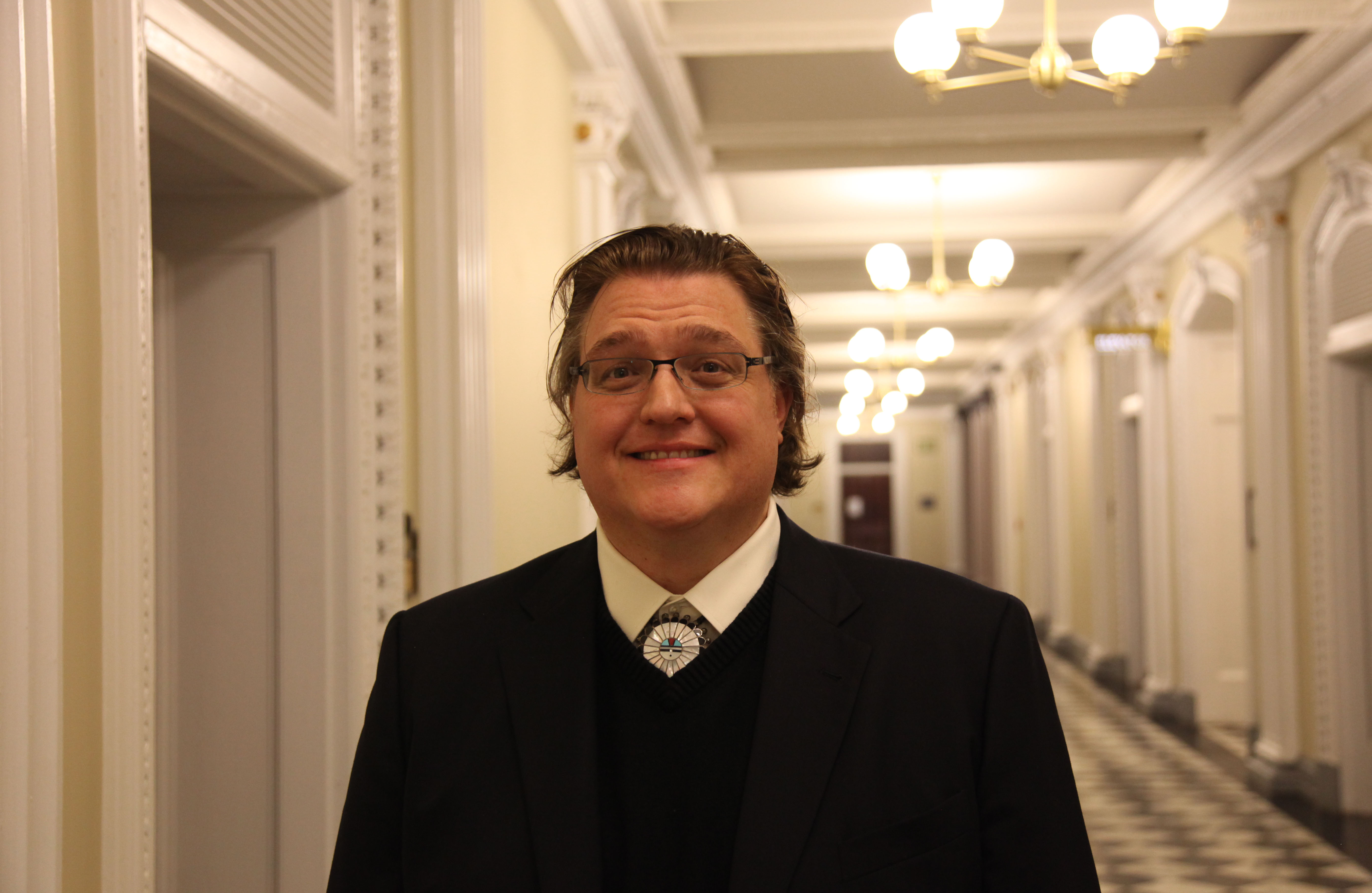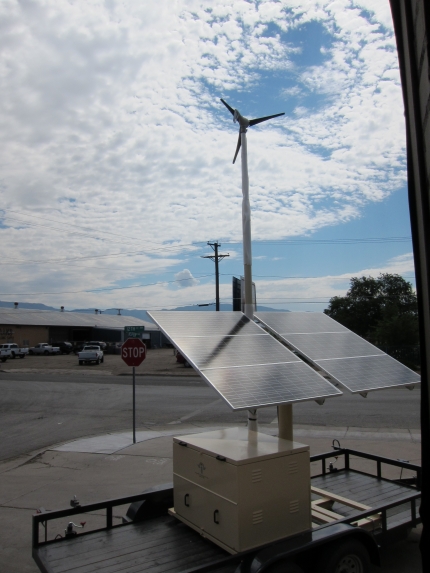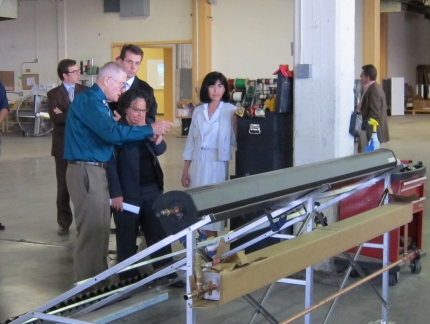Blog Posts Related to the Native American Community
Pursuing Equal Justice for All Native Americans
Posted by on October 24, 2011 at 12:38 PM EDTEd. Note: Champions of Change is a weekly initiative to highlight Americans who are making an impact in their communities and helping our country rise to meet the many challenges of the 21st century.
I am a member of the Squaxin Island Tribe of Indians, whose homelands encompass the southern waters of Puget Sound in Washington State. I was born and raised among my tribe, and continue to participate in the cultural activities of my people. I am proud of my Native American heritage, and I am grateful that my parents instilled in me a strong work ethic and a belief in the value of education. My father taught in a state juvenile detention institution for almost 30 years, and his example led me to focus my work on assisting adults and juveniles in tribal justice systems. Sadly, however, I am also motivated by an awareness of the tragic disparities faced by Native Americans as a result of both historical trauma and present-day realities. Native Americans die from alcohol-related causes at a rate six times higher than that of all other races in the United States combined; they are more likely than members of all other races to commit suicide, to be the victims of homicide, and to die from unintentional injuries; they suffer from higher rates of infant mortality; and the United States Department of Justice has determined that one in three Native American women will be raped during her lifetime. I have seen examples of these disparities among my own family and friends.
Learn more aboutOsage Tribal Trust Settlement
Posted by on October 21, 2011 at 7:09 PM EDTToday, we joined Osage Tribe Principal Chief John Red Eagle, other tribal leaders, and our colleagues at the Treasury Department, in a ceremony to commemorate an historic settlement marking the end of a long-running lawsuit by the Osage Tribe of Oklahoma regarding claims involving the United States’ accounting and management of the tribe’s trust funds and non-monetary trust assets.
Reaching a final settlement with the Osage Tribe on its trust accounting and trust mismanagement claims has been a priority for the Department of Justice and the Department of the Interior. Attorney General Holder and Secretary Salazar have been committed to resolving pending tribal trust accounting and trust mismanagement cases, in a fair and equitable manner and without protracted litigation, so that the United States and the tribes can jointly undertake reconciliation and empowerment for American Indian nations.
Learn more aboutShare Your Story with the White House Native American Youth Challenge
Posted by on September 26, 2011 at 3:34 PM EDTSince the launch of the White House Native American Youth Challenge in early July, young people across Indian Country have been answering the President’s call to submit their stories of leadership and service in their communities. Native youth have been active and engaged throughout the summer; hundreds attended the National United National Indian Tribal Youth (UNITY) conference in Minnesota, the National Intertribal Youth Summit in New Mexico hosted by several federal agencies, and the Let’s Move in Indian Country Lacrosse event on the South Lawn of the White House, among others. But as the summer has come to an end, so too does the Youth Challenge and the last day to submit applications is this Friday, September 30, 2011. We have already received an outstanding response and we hope even more young people will respond before the deadline.
Learn more aboutSacred Power: Growing Jobs and Nurturing Communities
Posted by on September 22, 2011 at 6:25 PM EDTSacred Power Corporation (SPC) was established in 2001 as Native American owned and operated small business that provides renewable energy solutions to government, commercial and residential customers. "Using the strengths of the Father to Protect the Gifts of the Mother" is our guiding principle, and it has guided us to success.
SPC has always been at the forefront of renewable energy innovation, beginning with our installation of the first solar carport structure in the State of New Mexico. Nearly eleven years later, that same carport is generating clean energy for the Indian Pueblo Cultural Center in Albuquerque, NM. With funding from the American Reinvestment and Recovery Act and the support of the Obama Administration, we have now put large-scale renewable energy installations in New Mexico Schools for the first time. This allowed SPC to hire people at a time when jobs are scarce. With hundreds of installations across the U.S, SPC now employs 59 people from all disciplines, including engineers, electricians, installers, and office and administrative staff. We're also working with teachers to help them educate and inspire students about the great potential of green technology and green jobs in our communities. And we're working with Tribal Nations on the construction of energy efficient and solar powered Housing and Urban Development homes for lower-income Americans, who spend much of their earnings on their energy bills.
SPC's patented stand-alone solar generators provide cost effective rural electrification for Native American homes. This power provides refrigeration for fresh foods, milk, and medicines, and for basic home needs. Unfortunately, there are over 10,000 of these “off-grid” homes scattered across Native Lands in the desert southwest without power, fuel or running water. SPC systems have already helped hundreds of senior citizens, single parent and low income families.
We are proud to have over ten Tribal Nations represented among our employees. And we are proud that our remote power systems, energy efficient telecommunication shelters, and grid tie photovoltaic power generators have served public sector customers of Tribal Nations, the U.S. Military, Department of Defense, Department of Energy, U.S. Forest Service, and NASA, to name a few.
At SPC, we know firsthand the potential of renewable energy and green technology to provide good jobs. We hope to take advantage of this potential to continue to grow and sustain our community for years to come.
David Melton is Chief Executive Officer of Sacred Power Corporation
Learn more about Energy and EnvironmentSupporting Tribal Nations through Comprehensive Engagement & Investment
Posted by on September 15, 2011 at 11:02 AM EDTEd. Note: This post has been cross-posted from usdoj.gov.
In line with Attorney General Holder’s commitment to enhancing public safety in Indian Country, Assistant Attorney General Tom Perrelli announced grants totaling $118.4 million to support law enforcement practices and sustain crime prevention and intervention efforts.
Tribal governments received awards in areas including public safety and community policing; methamphetamine enforcement; justice systems and alcohol and substance abuse; corrections and correctional alternatives; violence against women; elder abuse; juvenile justice; and tribal youth programs.
“This year, we encouraged comprehensive safety planning– because we know innovative and holistic approaches work,” said Perrelli, who made the announcement at the department’s Four Corners Indian Conference in Ignacio, Colorado.
Making Progress for Indian Country
Posted by on September 12, 2011 at 1:28 PM EDTWorking to fulfill President Obama’s commitment to create jobs and improve the quality of life for Native American communities, the Department of the Interior and the Bureau of Reclamation are working to provide safe and reliable water supplies across Indian Country as we aggressively implement an unprecedented number of Indian water rights settlements. To achieve the goals we have with our Tribal partners, major water infrastructure is being developed with the potential to create thousands of jobs throughout the development and construction of these important projects.
Since our first days in office, the Obama Administration has been strongly supportive of Indian water rights settlements. With the leadership of Interior Secretary Ken Salazar, we have supported resolution of the Navajo-San Juan River claims in New Mexico, endorsed a settlement for the Duck Valley Reservation in Nevada and Idaho, and worked to enact four new settlements at the end of last year as part of the Claims Resolution Act of 2010. This support for Indian water rights settlements is unprecedented – six settlements in the last two years – but we also recognize that there is a lot more work to do.
The American Jobs Act and Indian Country
Posted by on September 9, 2011 at 4:33 PM EDTWhile the current economic crisis has challenged all Americans, we know this to be especially true for Indian Country where some reservations face unemployment rates of up to 80%. Though the economic challenges of Indian Country are significant, President Obama is committed to forging a brighter future with tribes by identifying and developing long-term solutions that will help break the generational history of unemployment in Indian Country.
Last night, the President announced the American Jobs Act, a jobs and growth plan that reflects a commitment to increasing access to jobs for all Americans. With unemployment among Native Americans at an unacceptably high rate, the President believes that inaction is not an option. That’s why the President has put out a plan to increase the pace of job creation, and why he has called on Congress to act on this plan. The American Jobs Act will make a difference in Indian Country. For example:
- Tax cuts to benefit over 20,000 Native American-owned small businesses. The President is proposing tax cuts that will go to every small business nationwide, providing incentives to hire and make new investments.
- An estimated 1.5 million Native American workers will benefit from the extension of the payroll tax cut. By extending the payroll tax cut for employees next year, the President’s plan will help increase the paychecks of 1.5 million Native American workers – providing them with more money to spend in their communities and support their families.
- The extension of unemployment insurance will benefit Native Americans and their families, while providing targeted support for the long-term unemployed. In addition to extending unemployment insurance, the President is calling for reforms and tax incentives that will help the long-term unemployed – including the disproportionately high rate of Native Americans who have been looking for work for more than six months – find a job.
- “Pathways Back to Work” will support subsidized jobs and summer/year-round jobs for low-income Native American youth and adults. In an environment with an unacceptably high unemployment rate for Native American youths, the President is proposing to build on successful programs like those used in the Recovery Act to create jobs for those hardest-hit by the recession.
- A commitment to rebuilding and revitalizing communities across the country will target investments to the communities hardest-hit by the recession. The President’s investments in infrastructure include a school construction initiative that will provide $125 million for schools funded by the Bureau of Indian Education and $12.5 million for tribal colleges, and a new initiative to expand infrastructure employment opportunities for minorities, women, and socially and economically disadvantaged individuals, including Native Americans.
Treasury Announces Awards to Benefit Low-Income and Distressed Native Communities
Posted by on August 25, 2011 at 3:49 PM EDTEd. Note: Cross-posted from Treasury Notes, the Department of the Treasury blog.
Building upon last month’s announcement of $142 million in awards for distressed communities – the single largest round of awards in the Community Development Financial Institutions (CDFI) Fund’s history – yesterday, I had the privilege of meeting with a national gathering of Native CDFIs in Honolulu, HI where I announced an additional $11.85 million in awards expressly for financial institutions serving Native American, Alaska Native and Native Hawaiian communities.
That money, made under the fiscal year 2011 round of Treasury’s Native American CDFI Assistance Program (NACA Program), will go to 35 organizations with a primary mission of serving low-income and distressed Native communities in 17 states (pdf), the majority of them in rural areas. Of the 35, seven organizations serving Native Hawaiian communities will receive awards that will allow them to increase lending services, start new microloan programs and increase their capacity to serve their target markets.
- &lsaquo previous
- …
- 10
- 11
- 12
- 13
- 14
- 15
- 16
- 17
- 18
- next &rsaquo




